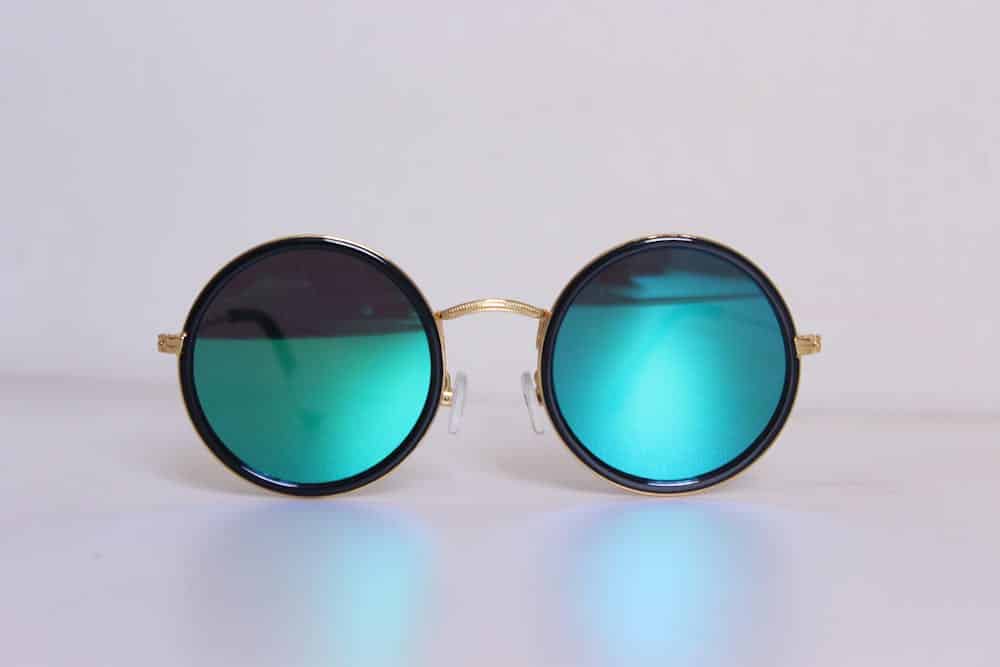This concern is understandable, as we all know that UV rays from the sun harm our skin and eyes. It’s natural to wonder if auto glass has any protection against them.
The short answer is yes, most modern auto glass is optimized for safety and comfort. Generally, windshields have more levels of UV protection than side and rear windows, but all of them do provide a fair level of protection.
Let’s go into the finer details of how auto glass blocks UV rays and why windshields require the most protection.
Understanding UV Rays and Their Impact
Let’s first understand what UV rays are and how they affect us, then we’ll dive into how auto glass stops them.
You can’t see UV (Ultraviolet) rays with your eyes, but that doesn’t mean they don’t exist. UV rays are harmful to human physiology and degrade common materials.
There are three types of UV rays:
- UVA.
- UVB.
- UVC.
Risks of Prolonged UV Exposure
UVA rays are the majority (95%) of the sun’s UV radiation that reaches Earth’s surface, and they can penetrate deep into your skin. UVA is usually the cause of premature aging and wrinkling.
UVB rays are more intense than UVA and can cause sunburns, skin cancer, and cataracts. Luckily, most of the UVB radiation is blocked by Earth’s ozone layer.
UVC rays are the most harmful, but they’re mostly absorbed by Earth’s atmosphere before reaching us.
All these UVAs can affect our health, but they’re also terrible for your car’s interior. They degrade common materials, including plastic, rubber, and fabric. Over time, exposure to UV rays causes these materials to fade, weaken, or become brittle.
Auto glass has to block UV rays, not just for your skin and health, but also to prevent your dashboard from cracking and car upholstery from fading and ripping.
Is Auto Glass UV Protected by Default?
Yes, it’s the default. Here are more details:
1. Windshield
Windshields require the most UV protection for the following reasons:
- It’s the biggest window in your car, so it has more area to cover.
- It’s right in front of you, meaning you get exposed to both direct and reflected UV rays that come from the windshield surface.
- You need a clear view of the road at all times, and UV rays can interfere with that.
- The windshield prevents you from getting thrown out of your car in a collision and supports the roof of your car, so you can’t afford to let UV rays weaken it.
Windshields feature laminated glass, which consists of two layers of glass sandwiching a plastic layer. This design makes windshields strong and durable, while also providing a crucial UV-blocking function.
The layer of plastic in the middle is made with polyvinyl butyral (PVB), so it can block 97–99% of UVB Rays.
2. Side and Rear Windows
These auto glasses are typically made from tempered glass that breaks into small, blunt pieces upon impact. It helps to prevent serious injuries from flying glass shards during collisions.
Tempered glass doesn’t offer the same level of UV protection that laminated glass does. Side and rear windows can fend off UVB and UVC rays, but they’re much less effective at blocking UVA rays.
That’s why most cars have tinted windows, which help reduce the amount of harmful UVA rays that enter the vehicle. Apart from tinting, you can also specially treat tempered glass to improve its UV protection, but at an extra cost.
How UV Protection in Auto Glass Works
Laminated vs. Tempered Glass
We’ve already glossed over this concept, but let’s dig a bit deeper. Both laminated and tempered glass are types of safety glass that offer protection against shattering and breakage.
However, their manufacturing processes differ in a way that affects their UV protection capabilities.
Laminated glass consists of a couple of thin glass layers with polyvinyl butyral (PVB) sandwiched between them. This interlayer acts as a barrier to block UV rays from passing through the entire thickness of the glass.
In contrast, they make tempered glass by heating regular glass up to 680 degrees Celsius, followed by a rapid cooling process. This process creates internal tension within the glass, making it stronger and more resistant to breakage. This process does not provide any additional UV protection.
Why Not Use Laminated Glass for All Auto Glass?
Most car makers prefer laminated glass for windshields because of its ability to retain its shape during an impact. When a windshield shatters due to an accident, the broken pieces stick to the PVB interlayer instead of flying outwards and causing harm.
Using laminated glass for car windows comes with some downsides. For starters, it’s considerably heavier and thicker than tempered glass, so it adds to your car’s weight, affecting its overall performance.
Laminated glass is more expensive to produce, making it costlier for consumers to replace in case of damage.
Tinted and Coated Glass Options for Enhanced UV Protection
In addition to laminated and tempered glass, there are also tinted and coated glass options available for enhanced UV protection.
Tinted glass features a special film or coating that helps minimize the sunlight and UV rays that enter the car. The idea behind tinted glass is to minimize the radiation and light getting into your car for privacy and keeping your car interior cool when the sun is scorching hot.
It also reduces glare from external sources such as headlights or sunlight reflecting off buildings.
Coated glass depends on a special metallic coating that blocks harmful UV rays from entering the car. This type of glass helps regulate the temperature inside the vehicle by reflecting heat away from the car’s interior.
Role of Aftermarket Window Films in Vehicle Glass Coating
Aftermarket window films are an increasingly popular option if you desire to enhance your car’s glass coating performance. You only need to apply these thin, adhesive films to your car windows’ interior surface.
One of the main functions of aftermarket window films is to reduce the amount of visible light that enters the vehicle. While factory-installed coated glass can provide some level of protection, aftermarket films can offer even more control over how much light enters the car.
Benefits of UV-Protected Auto Glass
We’ve touched on various benefits of UV-protected auto glass throughout this post, but let’s summarize them in one place for a clearer understanding.
1. Protects Passengers from Harmful Rays
This point is self-explanatory, and we’ve also used previous sections to explain how UV-protected auto glass keeps passengers safe by blocking harmful rays.
2. Preserves Vehicle Interior and Resale Value
UV rays will run down your car’s interior over time, as it’s usual behind upholstery and dashboard fading, discoloration, and cracking. UV-protected auto glass helps prevent this damage, sparing the interior and boosting your vehicle’s resale value.
3. Reduces Glare for Safer Driving
Glare from direct sunlight or other sources can obstruct your driving visibility, potentially causing accidents. UV-protected auto glass reduces glare, making it easier and safer for you to see and steer your vehicle.
4. Enhances Energy Efficiency by Reducing Heat
UV rays heat the interior of a vehicle, especially during hot summer months. UV-protected auto glass helps keep the interior cooler by reflecting away a robust portion of the radiation.
You enjoy chill drives and energy efficiency as your air conditioners work less.
How to Tell If Your Car Has UV-Blocking Glass
If you are unsure whether your car has UV-blocking glass, there are a few easy ways to find out:
- Look for the “UV protection” label or sticker on the windshield or other windows.
- Check for etchings, stickers, or manufacturer specs.
- You can use a black light test to check for UV blocking: if the glass doesn’t allow fluorescence under UV exposure (i.e., no or minimal glow), then it likely has UV-blocking properties—whereas glowing glass indicates UV transmission, not protection.
Rite-Way Auto Glass Can Assess UV-Blocking Capabilities
Trained professionals will have an edge over you in these things. Rite-Way Auto Glass, for instance, can assess the capabilities of your car or truck’s windows with ease.
If you’re unsure about the level of protection your vehicle’s windshield and windows provide, just consult with one of our experts.
Don’t Overlook the Importance of UV Protection for Your Car
UV protection is not just important for our skin and health – it also plays a crucial role in protecting our vehicles. Exposure to harsh UV rays can cause damage to your car’s interior and exterior over time, resulting in faded paint, cracked leather seats, and other issues.
Can You Add UV Protection to Existing Auto Glass?
Yes, you can add UV protection to existing auto glass, and we already touched on tinting and filming as options. However, there are also UV protection sprays and coatings available in the market that you can easily apply to your car’s windows.
These products work by creating a barrier between your car’s interior and exterior, blocking out UV rays as natural light filters through.
Legal Considerations in Kentucky
Just because you can doesn’t always mean you should. Kentucky state laws have restrictions on the level of darkness allowed for tinting and filming in auto glass.
According to the Kentucky legislature, front side windows must let in at least 35% of light, while the minimal requirement for back side and rear windows is 18% of light.
Therefore, you should consult your state laws to determine the permissible level of window tinting.
The Last Word on UV Protection for Your Car?
In short, UV-protected auto glass is more than just a comfort feature—it’s a long-term investment in your health, safety, and vehicle value. Whether built-in at the factory or added through aftermarket solutions, proper UV protection shields you and your passengers from harmful rays, preserves your car’s interior, and keeps your driving experience safer and more comfortable.
By understanding how your glass works and ensuring it meets your needs—and local regulations—you can enjoy the road ahead without worrying about the sun’s silent damage.




